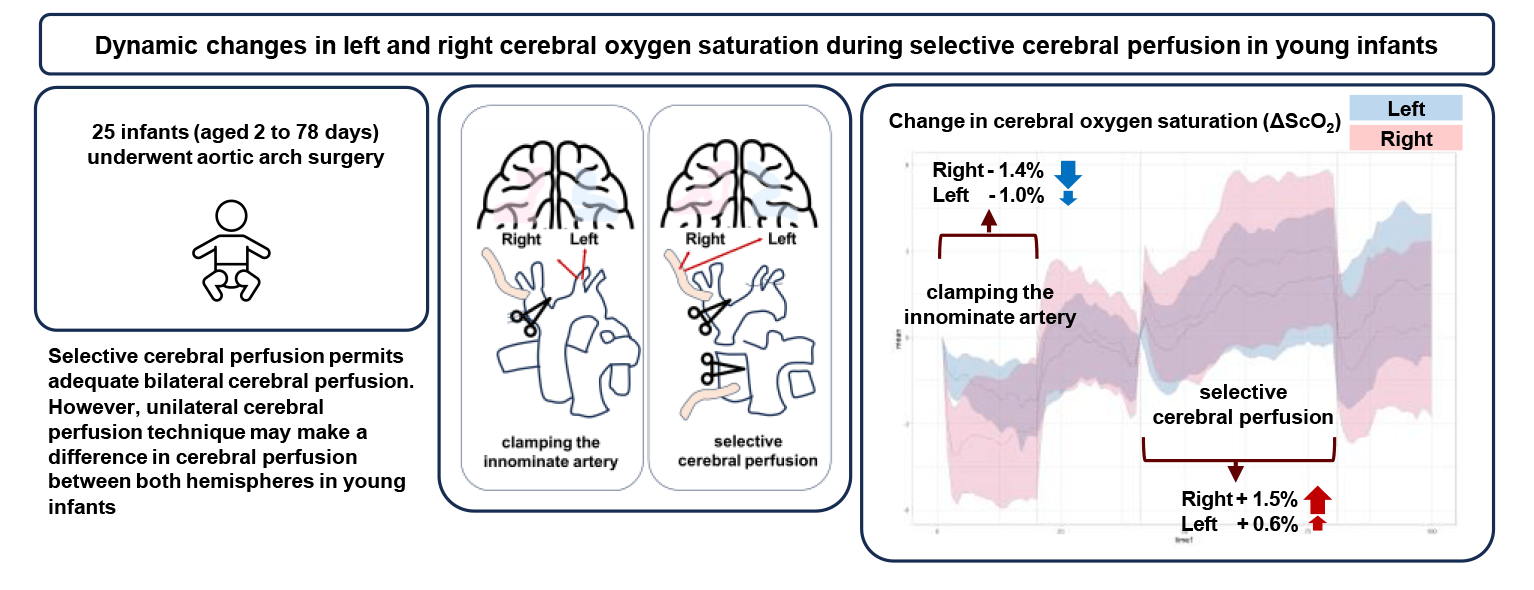 Open Access
Open Access
ARTICLE
Dynamic Changes in Left and Right Cerebral Oxygen Saturation during Selective Cerebral Perfusion in Young Infants
1 Department of Anesthesiology and Pain Medicine, Laboratory for Cardiovascular Dynamics, Asan Medical Center, University of Ulsan College of Medicine, Seoul, 05505, Korea
2 Department of Physician Education and Training, Asan Medical Center, Seoul, 05505, Korea
* Corresponding Author: Won-Jung Shin. Email:
Congenital Heart Disease 2023, 18(6), 639-647. https://doi.org/10.32604/chd.2023.030065
Received 21 March 2023; Accepted 24 October 2023; Issue published 19 January 2024
Abstract
Objectives: We investigated whether the selective cerebral perfusion (SCP) technique causes differences in changes in cerebral perfusion between both hemispheres in young infants, using cerebral oxygen saturation (ScO2) as an index. Further, we determined the association between the discrepancy in ScO2 and cerebral perfusion pressure during SCP. Methods: The difference in ScO2 between the left and right cerebral hemispheres (ΔScO2 Rt-Lt) was calculated during clamping of the innominate artery (IA) and during SCP. Results: In 25 infants (aged 2 to 78 days), the left and right ScO2 were well maintained (median 63.2% and 60.9% during IA clamping, respectively; 64.0% and 65.6% during SCP, respectively). During IA clamping, right and left ScO2 decreased (median −1.4% and −1.0%, respectively). During SCP, right ΔScO2 was higher compared to left ΔScO2 (median 1.5% vs. 0.6%; p < 0.001). Eight patients had a higher right ΔScO2 than left ΔScO2 throughout SCP. They had lower ΔScO2 Rt-Lt during IA clamping (median −3.2% vs. 0.0%; p < 0.001) and higher ΔScO2 Rt-Lt during SCP than others (median 5.0% vs. −0.8%; p < 0.001). During and after SCP, the correlation coefficient between right ΔScO2 and change in the mean arterial pressure was higher in patients with a discrepancy than in others (r = 0.731 vs. r = 0.519; p < 0.001). Conclusions: This study suggests that SCP permits adequate bilateral cerebral perfusion. However, the unilateral cerebral perfusion technique may cause a difference in cerebral perfusion between both hemispheres in young infants; this may depend on the perfusion pressure.Graphic Abstract

Keywords
Cite This Article
 Copyright © 2023 The Author(s). Published by Tech Science Press.
Copyright © 2023 The Author(s). Published by Tech Science Press.This work is licensed under a Creative Commons Attribution 4.0 International License , which permits unrestricted use, distribution, and reproduction in any medium, provided the original work is properly cited.


 Submit a Paper
Submit a Paper Propose a Special lssue
Propose a Special lssue View Full Text
View Full Text Download PDF
Download PDF Downloads
Downloads
 Citation Tools
Citation Tools